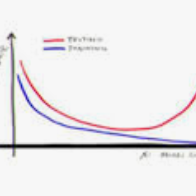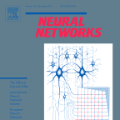We study how well generative adversarial networks (GAN) learn probability distributions from finite samples by analyzing the convergence rates of these models. Our analysis is based on a new oracle inequality that decomposes the estimation error of GAN into the discriminator and generator approximation errors, generalization error and optimization error. To estimate the discriminator approximation error, we establish error bounds on approximating H\"older functions by ReLU neural networks, with explicit upper bounds on the Lipschitz constant of the network or norm constraint on the weights. For generator approximation error, we show that neural network can approximately transform a low-dimensional source distribution to a high-dimensional target distribution and bound such approximation error by the width and depth of neural network. Combining the approximation results with generalization bounds of neural networks from statistical learning theory, we establish the convergence rates of GANs in various settings, when the error is measured by a collection of integral probability metrics defined through H\"older classes, including the Wasserstein distance as a special case. In particular, for distributions concentrated around a low-dimensional set, we show that the convergence rates of GANs do not depend on the high ambient dimension, but on the lower intrinsic dimension.
翻译:我们通过分析这些模型的趋同率,研究如何通过分析这些模型的趋同率,从有限的样本中发现概率分布。我们的分析基于一种新的神器不平等,将GAN的估计误差分解成导体和发源近似误差、一般化误差和优化误差。为了估计偏差近似误差,我们通过ReLU神经网络对相近的H\"older older 函数设置了误差界限,对网络的Lipschitz常数有明确的上限或对重量的规范限制。关于发电机近似误差,我们表明神经网络可以将低维源分布大致转换成高维目标分布,并将这种近似差错由神经网络的宽度和深度加以约束。为了将近似结果与统计学习理论的神经网络的全域界限结合起来,我们在不同环境中建立GANs的趋同率,当错误是通过H\"older 类中定义的综合概率度指标的收集来测量时,包括Wasserstein 距离作为特例。我们发现,特别是,对于分布集中在低维目标分布点的分布,但取决于高维的GAN的内在维,我们显示GAN的趋同率取决于高维。




